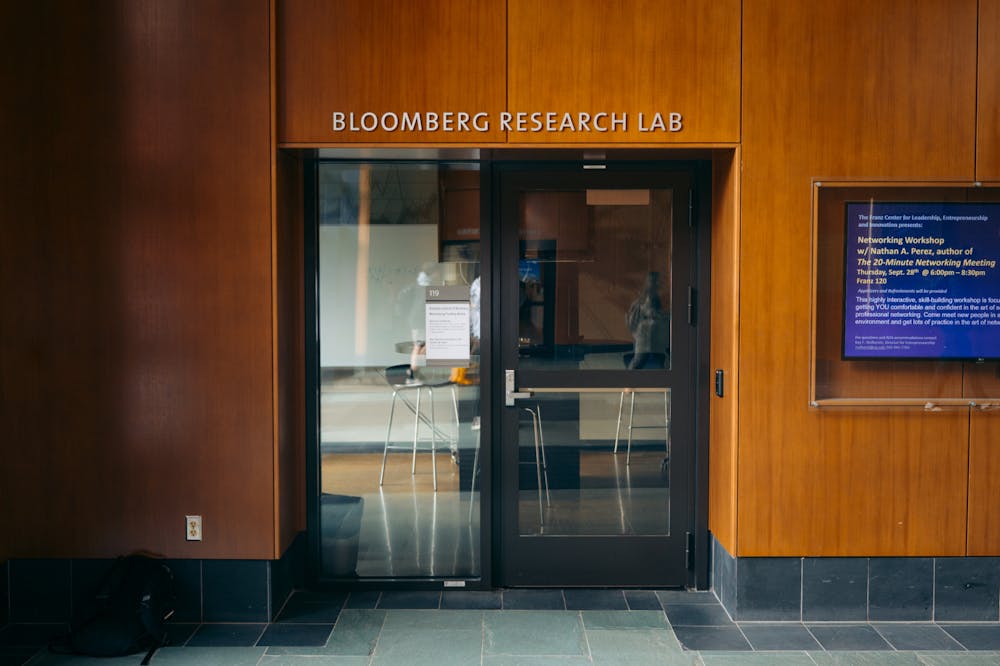In 2010 the University of Portland introduced a software system to campus that would revolutionize the way students could monitor, analyze and be active within the stock market. This interface is called the Bloomberg Lab and is available to students in a room on the first floor of Franz Hall.
Now, 13 years later, the University of Portland looks a lot different than it did at the start of the decade. With declining enrollment, growing inflation and desires to allocate university funds elsewhere, UP has decided to remove the Bloomberg system after the conclusion of the fall semester.
To compensate for this loss, the University will introduce FactSet, a cloud-based investment program that can facilitate many of the same functions as the Bloomberg Terminals.
“[FactSet] provides similar functionality to Bloomberg that will meet most of the educational goals that we need to meet,” finance professor Brian Adams said.
The University of Portland currently has 16 Bloomberg terminals that cost the University a total of $100,000 each year to keep.

The Bloomberg Terminals are priced based on an educational discount that adds additional terminals after three are purchased. After the purchase of three terminals, the amount of terminals is tripled and added to the total amount.
“It's a very complex pricing strategy where you get an educational discount only after you buy two terminals,” DeVaughn said. “So right now we have 16 terminals and we pay roughly $100,000… What if we pull back one terminal? Our costs would be $75,000 and we’d have 12. What if we pull back two terminals? If we pull back two terminals our cost would be $50,000 and we would only have two terminals.”
Additionally, according to Dean of the Business School Michael DeVaughn, the Bloomberg lab is the largest non-personnel expense in the business school.
“In 2010 things were robust here and we could afford to spend that kind of money on that and have this kind of nice little star to talk about back then,” DeVaughn said. “We're definitely under a different set of circumstances.”
While FactSet is comparable to the Bloomberg terminals, Bloomberg offers a variety of additional benefits outside of just tracking and investing in the stock market. Certificate courses that can boost knowledge and resume power for students is just one of the Bloomberg lab’s additional benefits.
“Bloomberg is probably the top data source for finding out about any type of business, finance, marketing management information that you need,” Adams said.
The benefits of the Bloomberg Lab are seen heavily in the work of the University of Portland Investment Association (UPIA), a student-run club that develops an investment portfolio that is actively invested in the stock market. As of right now, UPIA’s investment portfolio sits at approximately $600,000.
UPIA President Max Daniels sees the Bloomberg Lab as crucial to the projects of the club.
“We use the Bloomberg terminal to access real time financial data … conduct research reports and keep in communication with the financial industry,” Daniels said. “We use it for everything.”
Until January, Daniels and the rest of UPIA look to make the most out of the software while it is still available.

“We're going to really try to maximize that by getting people certified and some experience on Bloomberg so that they can put that on their resume and come into interviews with a little bit of Bloomberg experience,” Daniels said.
The removal of the Bloomberg terminals is a new addition to a series of budget cuts that the school has been making since last school year. These cuts are a direct result of the continual decrease in enrollment.
“We've lost 200 students at least a year for the past three or four years, that's a significant hit, and you’ve got to start making hard decisions,” Adams said. “I'm sadder than anybody that we're losing them, but hard decisions need to be made.”
While UPIA is the primary user of the Bloomberg terminals at UP, they are open to all students. However, the lack of demand by the more general student body was a contributing factor to the removal of the software system.
Adams saw potential interest from both students and faculty but feels as if the connection to the general body was difficult to cultivate.
“It's probably best said that we did not fully utilize it — from both the student and a faculty standpoint — to the level we should have,” Adams said. “Not saying people didn't try… but I never felt that we got that full connection on both sides.”
To access the Bloomberg Lab for the rest of the fall semester, students can get their card coded for access by Campus Safety.
Kate Cuadrado is the Editor-in-Chief of The Beacon and can be reached at cuadrado24@up.edu.








